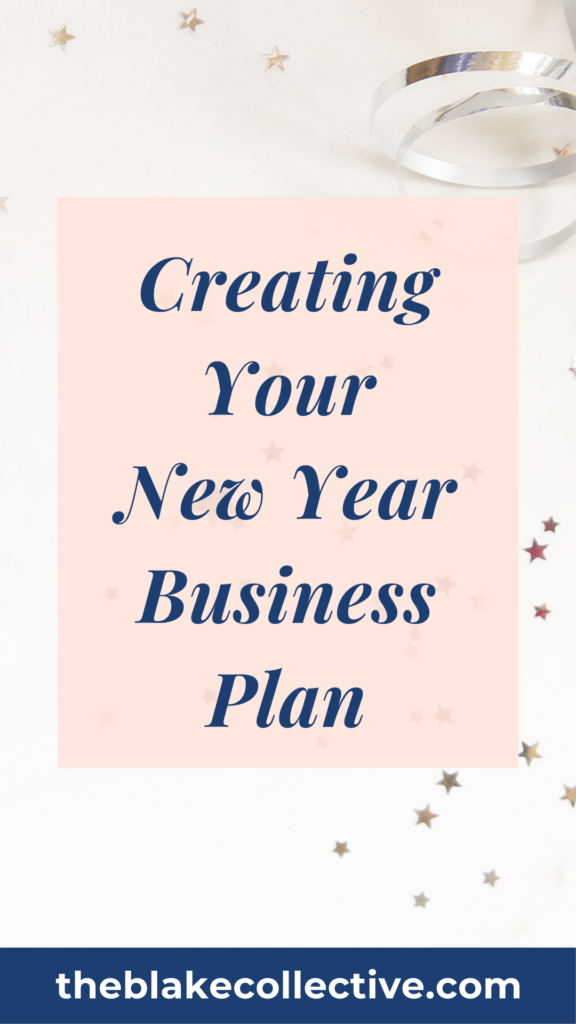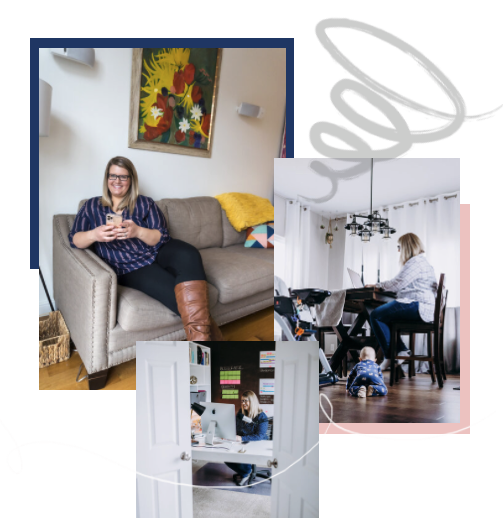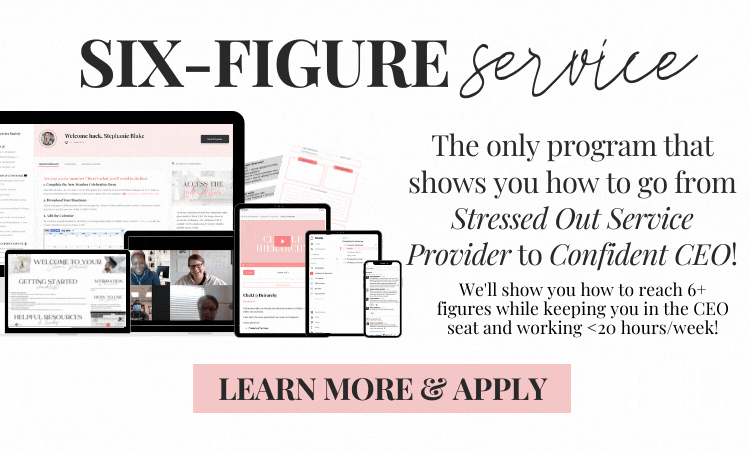WORKSHOP
Free
In this LIVE training, you'll learn the exact system to work less than 20 hours per week and make 6+ figures in one year with 1 team member & no ads.
Creating Your New Year Business Plan
November 17, 2021

With the New Year upon us, now is the perfect time to start creating your plan and mapping out your goals for your service-based business in the next year.
By planning for the New Year in advance, you’ll be able to know exactly what to focus on so you can start off on the right foot!
Plus, we always want to make sure that we set goals so we have something to actively work toward! In this post, I share a few of my favorite tips for making sure that you’re planning your year out effectively.
Don’t become too overwhelmed with the planning process
It’s important to not get too overwhelmed with your planning process; you don’t need to have every single detail mapped out for the year. I personally recommend not looking further than two quarters ahead.
While you want to set your projections for the year ahead, when it comes to planning things out, especially in our ever-changing world, you don’t want to commit yourself to too many things at this point. 90 days is my personal go-to for planning, but you might want to stretch this to two quarters if you know you have big events coming up.
Determining your revenue goal for the year
After you take a deep breath, you want to focus on outlining your revenue goal for the year. Grab a piece of paper and write your annual goal at the top, divide this by 12, and you’ll have the monthly figure that you need to achieve to get to this annual goal.
For example, if you want to make $100K in a year, the monthly amount you need to get to that point is $8,300.From there, you’ll need to look at your current rates, and figure out how many clients you’ll need to reach your monthly goal.
For example, if your clients are $1K/month, you’ll need 8 new (or recurring clients) every month to get to that point. This is one of the best ways to put into perspective how you can scale your service-based business to 6+ figures.
Plus, it gives you a very clear goal to shoot for every month.
Map out how to reach your goals
Now that you know the numbers you want to reach, we’re going to map out one quarter at a time. Before you get started, block off any personal or vacation time that you need. For example, if you know you’re going on vacation in May, you want to make sure that you don’t have any big projects to work on while you’re out.
Next, outline any of your big launch dates, so you can see what’s coming up down the road and prepare effectively. Eventually, you’ll have repeatable systems for your launches, so you can simply repeat what you’ve used for the previous one.
Next, plan out your pre-launch content such as social media posts and email ideas; do this at least 4 weeks before you plan to open your cart. You don’t need a full content outline at this point, just the number of days that you’ll post content, the types of content for each day and the total amount of social media posts or emails you’ll need.
I personally love to use a combination of Airtable and ClickUp to plan out my content and launches. Finally, add in dates for any projects you want to work on (i.e. updating your website, taking brand photos, creating a course, launching a podcast..etc).
Start backward with the end goal and map out every task that you need to work on to accomplish the project. I love to use ClickUp to map all of these projects out.
Start keeping track of your revenue and expenses now
Now that we have our goals planned out, let’s look at your upcoming expenses and revenue. You likely know that you have revenue coming in for next year already if you have clients lined up for January and onwards.
Start planning everything out now, so you can see your projected revenue in advance.I like to keep a detailed sheet with the client’s name and their payment dates, so I have a clear overview of the money coming in each month & can follow up with people if their card fails for some reason.
I highly suggest doing the same thing with your expenses and outline any monthly charges that you pay each month. This will help you see where your money is going and if you want to make an investment, you can save up for it because you’ll know exactly what your money story looks like.
Also, if you use a piece of software regularly, consider switching to an annual payment plan, so you can have it paid off at the start of the year, and you don’t have to worry about that recurring expense each month. This will allow you to focus on creating a high profit margin for your business in Q1.
For example, I was on a monthly payment plan for my favorite CRM, Dubsado, but it didn’t make sense to stay on that monthly plan and pay extra since I knew I would use it every month. It’s important to set realistic goals for your business, especially with the current state of our world!
Plus, by keeping track of your money, you can set yourself up for success and start scaling your service-based business in the upcoming year.
Speaking of scaling, are you ready to scale your service-based business to 6+ figures so you can work <20 hours/week? Six-Figure Service™ is my high touch, group coaching program where I show you how to transition from a stressed service provider to confident CEO.
Plus, when you apply for Six-Figure Service, you’ll get access to my private, advanced training that shows you how to create $100K+ in the next 9 months with my 5-part, S.C.A.L.E. Method framework for FREE!
>>> Click here to learn about Six-Figure Service and apply for your free training <<<

MEET STEPH BLAKE
After more than 10 years in corporate marketing, Steph Blake decided that she was ready to go full force in her virtual assistant business to help other entrepreneurs automate & organize the backend.
The end result? $14K+ months, completely booked out & ready to teach other women to do the same thing!
What began as a tiny dream to eventually help other moms stay home with their kids, turned into an obsession that she’s fully invested in as a business coach.
Today she shows women how to start a virtual assistant business and scale it to reach 6+ figures while working less than 20 hours per week.
